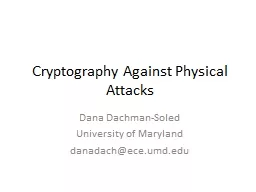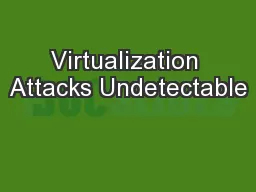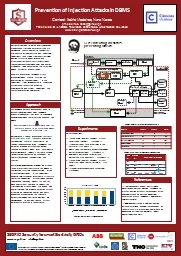PPT-Random Subdomain Attacks
Author : jordyn | Published Date : 2023-06-26
Plaguing the Internet DNS based DDoS attacks increasing Late 2012 DNS amplification remerges as a problem January 2014 new innovation with random subdomain attacks
Presentation Embed Code
Download Presentation
Download Presentation The PPT/PDF document "Random Subdomain Attacks" is the property of its rightful owner. Permission is granted to download and print the materials on this website for personal, non-commercial use only, and to display it on your personal computer provided you do not modify the materials and that you retain all copyright notices contained in the materials. By downloading content from our website, you accept the terms of this agreement.
Random Subdomain Attacks: Transcript
Download Rules Of Document
"Random Subdomain Attacks"The content belongs to its owner. You may download and print it for personal use, without modification, and keep all copyright notices. By downloading, you agree to these terms.
Related Documents














